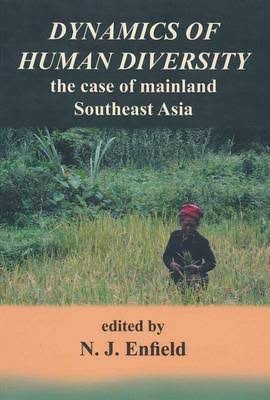Dynamics of Human Diversity: The Case of Mainland Southeast Asia
Publisher: Pacific Linguistics (2011), Canberra
N. J. Enfield


Publisher: Pacific Linguistics (2011), Canberra
N. J. Enfield
Human diversity is the central problem of all the fields of anthropology. Our languages, our genetics, our material cultures, our social organization: these are woven together by the ancient processes of change and diversification that produce the rich diversity we see today. What are these processes and how do they work? Can we know what life was like 10,000 years ago, and how it came to be the way it is today?
Dynamics of human diversity looks at these questions with a focus on one of the most fascinating sites of human diversity worldwide: mainland Southeast Asia (MSEA). In this book, experts on MSEA from across the disciplines of anthropology-linguistics, social anthropology, human biology, genetics, archaeology-bring together the latest empirical, methodological, and theoretical advances. Special attention is paid to two case studies of human diversity in MSEA: the Aslian peoples of Peninsular Malaysia, and the origin and diversification of the Austroasiatic languages. These, along with other chapters, show how new techniques for data collection and analysis are radically transforming what we know-and can know-about the past, and about the dynamic processes of human diversification.
The chapters of this book raise challenges for some common assumptions about the dynamics of diversity, especially for the idea that the key event in MSEA was a wave of agricultural colonization by ‘demic diffusion’. New evidence and analysis reviewed here suggests alternatives. By a scenario of population continuity, early resident populations of MSEA played a more agentive role in the social diffusion of ideas, technology, language, genes and cultural practices. The issues are explored here from a range of disciplinary approaches and points of view.


